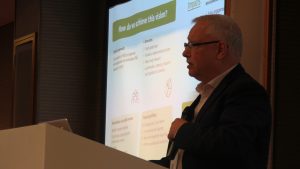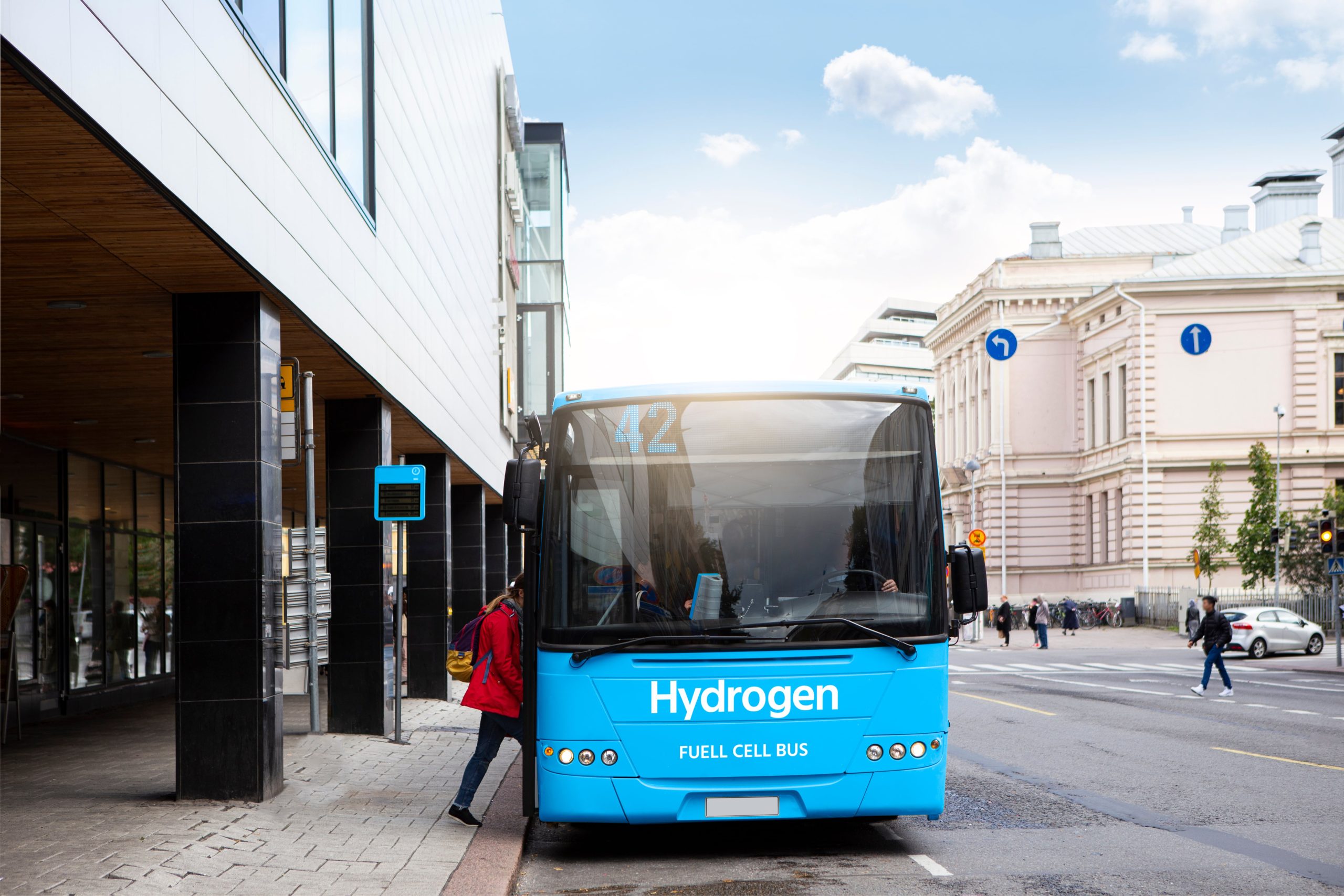HIL Durham: Highlighting Hydrogen’s Role in the North East

After the HIL 100 Breakfast Hub in Durham, Hydrogen Industry Leaders highlights the main takeaways from the day and shines a spotlight on how the North East is boosting the hydrogen economy.
On the day, Hydrogen Industry Leaders was joined by Chris Rowell – Head of Net Zero at Tees Valley Combined Authority, Professor Tony Roskilly from Durham University, Professor Dawid Hanak from Teesside University, and Chris Verity – Hydrogen Senior Projects Manager at Northern Gas Networks.
The Tees Valley has huge ambitions to become the world’s first net zero industrial cluster by 2040. As it is home to one of the biggest industrial clusters in Europe, it is the perfect location for decarbonisation and leading the UK’s net zero ambitions.
It is aiming to become a centre for industrial-scale low-carbon hydrogen production. Industrial processes in the Tees Valley already produce 50 per cent of the UK’s commercially available hydrogen through BOC.
To enable the new low-carbon hydrogen economy, it will be important going forward that the region moves quickly to produce hydrogen at scale.
Hydrogen has the potential to create 30,000 new jobs in Tees Valley
Showcasing Teesside’s wider hydrogen vision and how the region is focused on delivering large-scale carbon capture, utilisation, and storage, and over 4GW of hydrogen production by 2030, Chris Rowell from Tees Valley Combined Authority began the day.
Chris explained that focusing on renewable technology will help Tees Valley meet its decarbonisation goals: “Hydrogen will help us to add £2 billion a year to our GVA. This is a step change in our region’s economy, and it will help us have 30,000 new jobs by 2040.
“This will require about 10 billion in inward investment and this figure comes from projects that have already been announced, there is no assumption there.”

Chris Rowell from Tees Valley Combined Authority
Many hydrogen projects are in development in the region, for example, BP has committed to Hygreen Teesside, a new large-scale green hydrogen production facility.
This facility will target 60Mwe of green hydrogen production by 2025, and this has the potential to rise to 500Mwe by 2030.
On Tees Valley hydrogen potential, Chris explained that it will help to decarbonise the Tees Valley Industrial Cluster: “In the cluster, you’ll find around 60 companies there, and it has four major industrial sites, including the former Teessworks site.
“There is 3.5 to 4.5 million of carbon currently being emitted by the businesses there and this is a great challenge when it comes to getting them to net zero within not just our global goals and government targets, but within the timeframe set by the marker and customer-demand.”
Universities are key in delivering the world’s first net zero industrial cluster
To accelerate decarbonisation and the use of hydrogen in the Tees Valley, Durham and Teesside University are working together on a project through supporting industrial research and development and capacity building.
The £11 million project is led by Teesside University and is funded with £4.8 million from the Research England Development (RED) Fund, part of UK Research and Innovation, as well as funding from Teesside University, Durham University, and industrial partners.
Durham University’s contribution is led by the Durham Energy Institute (DEI). The DEI is a hub for multidisciplinary energy research and is at the forefront of the national and international research efforts in the production, storage, distribution, and utilisation of hydrogen.

Professor Tony Roskilly from Durham University
HIL Durham heard from Professor Tony Roskilly from Durham University, who highlighted that one project the university is exploring is: “The optimum exploitation of hydrogen to provide a range of energy services. Power to hydrogen and hydrogen to power conversion could reduce the overall efficiency to around 35 per cent.
“There is a massive potential loss in that process but these losses and the losses of any energy conversion, are in the form of heat. Therefore, if you integrate a system, it is possible to increase the overall efficiency above 90 per cent if you utilise it.”
In addition to this, Durham University is exploring a hydrogen-fuelled distribution energy hub concept, modelling and demonstrating this in its research facilities. The Professor expressed that this will look at: “A wide range of integrated technology to optimise the delivery of five energy services. These are to provide power to the grid, heat through a heat network, cooling through a cooling network, hydrogen refuelling, and rapid EV charging.”
This integrated system can utilise the heat and the power in the same way as would be done within a combined heat and power system.
He continued by highlighting that through the use of hydrogen storage, electrical storage, and thermal energy storage within the energy hub: “You can optimise to provide an efficient, flexible, and resilient system.”
If we put all of our eggs in one basket, we won’t have a resilient energy system in the UK.
Continuing, Professor Roskilly stated that there is no better time to start looking into hydrogen than now: “We feel like it is the right time if we are to meet net zero. We believe that the Tees Valley is the right place for hydrogen, it has the right level of ambition to deliver the world’s first net zero industrial cluster.”
Teesside is in the perfect position to boost public confidence in hydrogen
To add to how important research from universities is, Professor Dawid Hanak from Teesside University explained how the university has been at the forefront of the regional effort to establish a hydrogen economy. The £11 million project is just a reflection of this.
The Professor explained that reaching net zero is not just about technology but about business: “It is about how businesses can decarbonise and how they can do this in the most cost-effective way. At the end of the day, there will be two targets for businesses – environmental and financial targets.”
We need to marry both the environmental and financial targets together to build a sustainable economy.
It is important that to begin with, the region focuses on decarbonising the current energy that it produces. Professor Hanak highlighted that by doing this and learning from other renewable technologies, more innovation will take place: “Blue hydrogen could be a way to unlock the hydrogen infrastructure within the region but also would enable the transition to green hydrogen once the technology has been looked at.”
In developing a UK hydrogen economy, it is crucial that industry, investors, and the public are provided with confidence and certainty.
The Professor expressed that to do this, university research is key when it comes to getting public acceptance in initiatives: “Otherwise, it would be extremely difficult to implement technologies such as hydrogen. Research means that we will make sure that there are appropriate standards and policies in place so that we can check there are no risks involved.”

Professor Dawid Hanak from Teesside University
He continued to express that Teesside is in a good position to build public confidence in hydrogen: “It already has a heritage of being an industrial site which makes things a little bit easier in terms of the public acceptance of new technologies and decarbonisation activities.”
Due to it being an industrial-active environment, the North East is in the perfect position to attract investment, both from external sources such as the European Union but locally from government funding.
An example of this that the Professor gave was Teesside University’s work with InnovateUK: “We have got funding from InnovateUK and are working activity with them to demonstrate some of the hydrogen concepts we have.”
Hydrogen risks are the same as with natural gas
The final speaker of the day was Chris Verity – Hydrogen Senior Projects Manager at Northern Gas Networks. Northern Gas Networks is currently researching how the UK needs to adapt its network to transport hydrogen in the future and has opened the UK’s first Hydrogen Homes, to provide everyone with the experience of the reality of a house fuelled by hydrogen.

He explained that to become decarbonised and see hydrogen become a reality in the future, existing infrastructure will need to be retrofitted: “If we are to reach net zero in 2050, we won’t be shipping methane and our infrastructure will be effectively redundant and need to be decommissioned.
“It is a big asset, much of the energy is moved around the area is moved by natural gas. If we can repurpose that asset and use it for hydrogen, that is going to save the need to build a lot of new infrastructure.”
Providing this in practice, Chris highlighted that in a previous project, Northern Gas Networks had existing infrastructure in the ground that it converted to hydrogen: “We carried out all the different procedures that we normally do in running a gas network but with hydrogen instead to prove that its safe.”
Results will be announced later in the year showing the risks of having hydrogen in our existing network and they demonstrate that the risks are the same as with natural gas.
The key takeaway from HIL Durham is that the North East is the perfect position for hydrogen due to both its geographical location and heavy industrial history.
The Hydrogen Industry Leaders 100 Breakfast Hub will be also visiting Manchester on 22 September and Hull on 1 December 2023. To find out more, visit our event page here.

